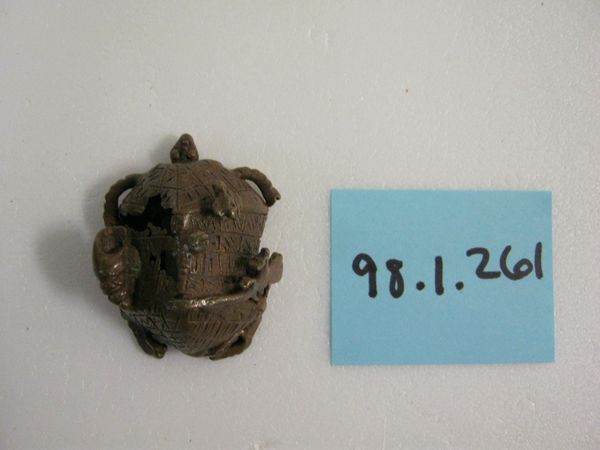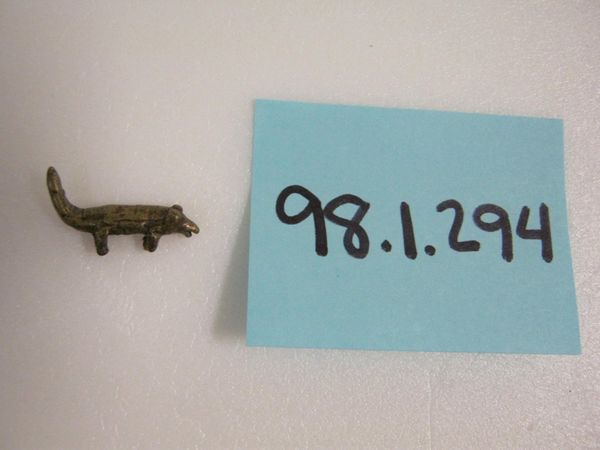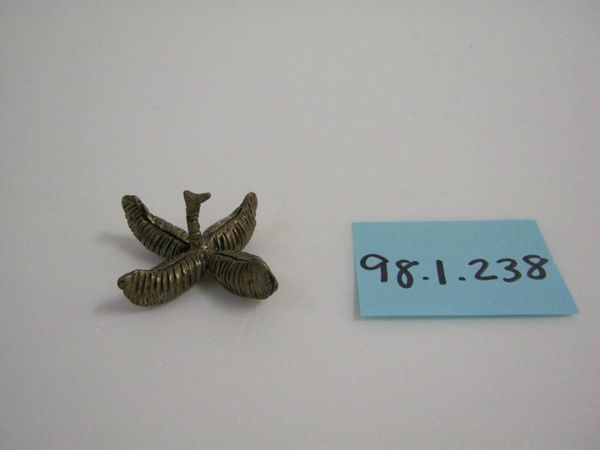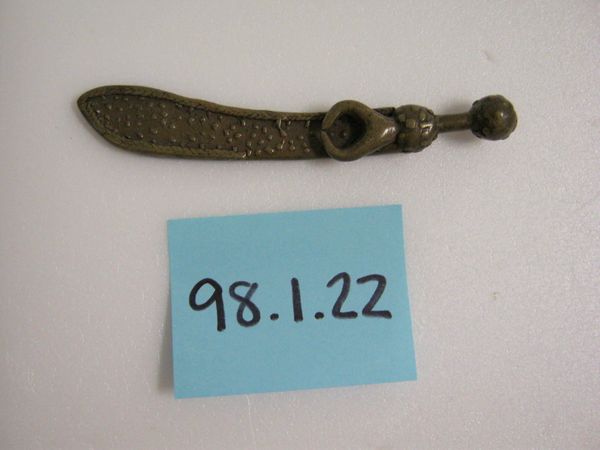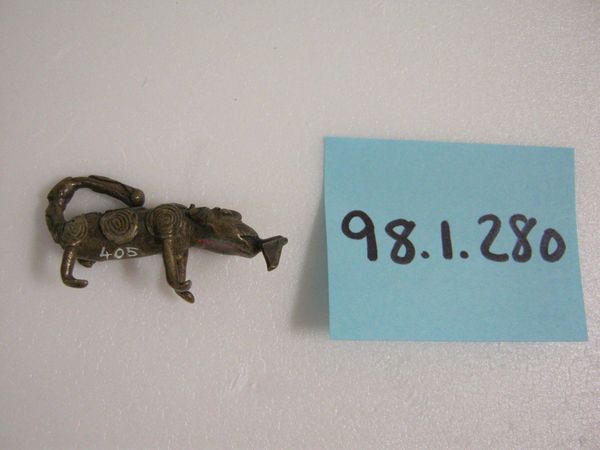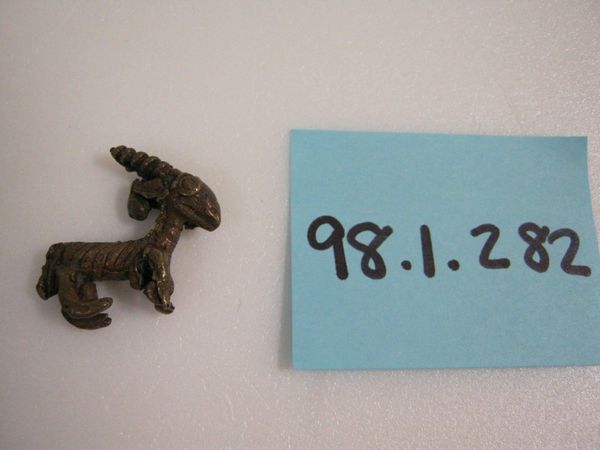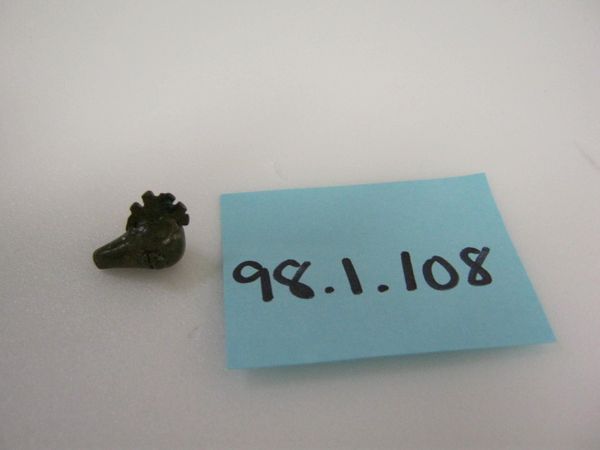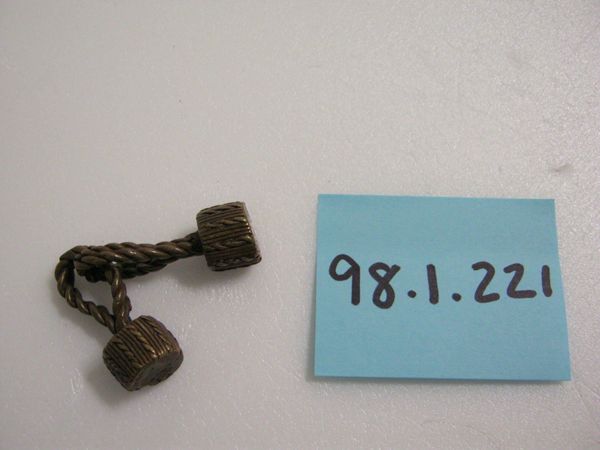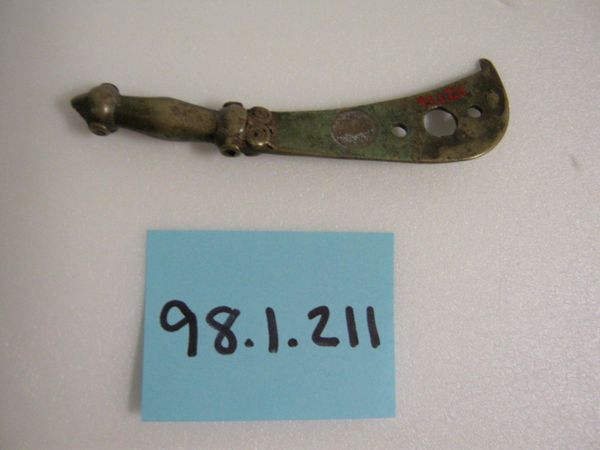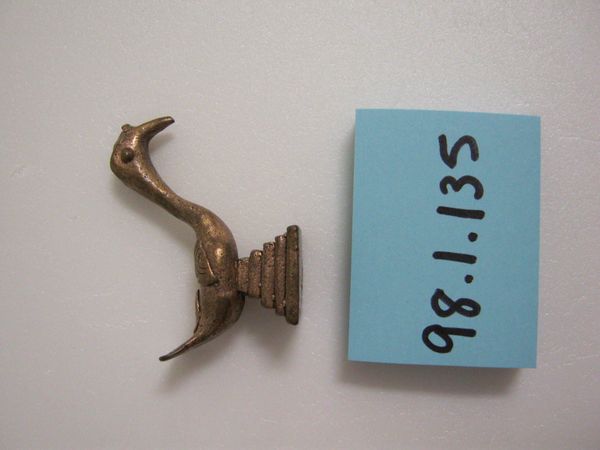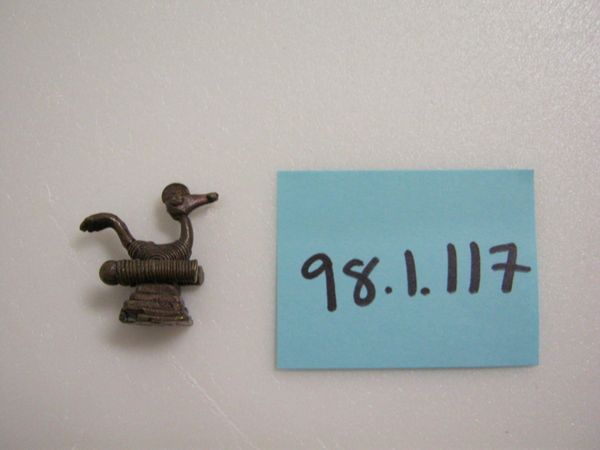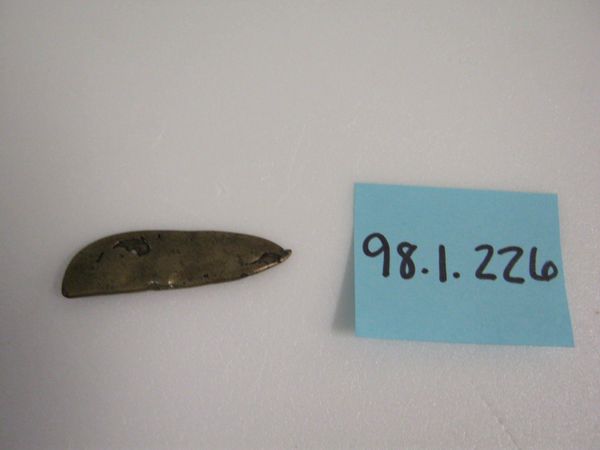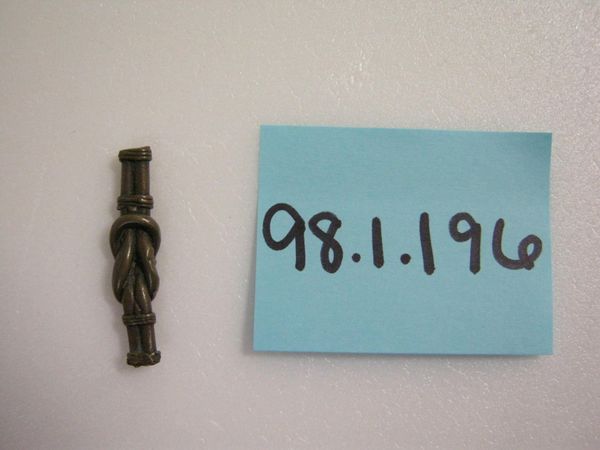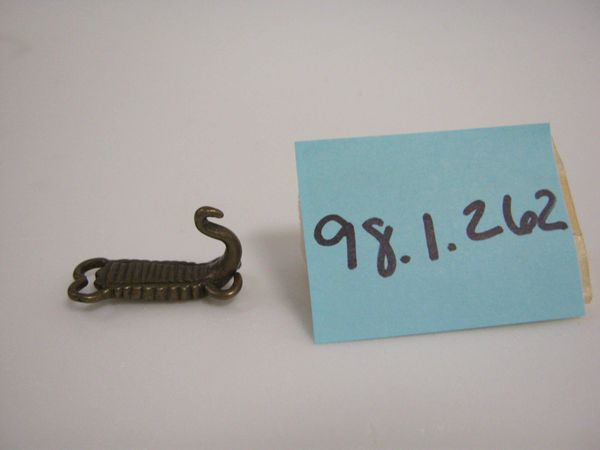![Goldweight [Crocodile and Fish on Log] by Akan](/_next/image?url=https%3A%2F%2Fd2w8kbdekdi1gv.cloudfront.net%2FeyJidWNrZXQiOiAiYXJ0ZXJhLWltYWdlcy1idWNrZXQiLCAia2V5IjogImFydHdvcmtzL2M4NWUzMzI0LTU4MGYtNDA4MC1hNDFiLWQ0MmFjZjVmOWI5Mi9jODVlMzMyNC01ODBmLTQwODAtYTQxYi1kNDJhY2Y1ZjliOTJfZnVsbC5qcGciLCAiZWRpdHMiOiB7InJlc2l6ZSI6IHsid2lkdGgiOiAxOTIwLCAiaGVpZ2h0IjogMTkyMCwgImZpdCI6ICJpbnNpZGUifX19&w=3840&q=75)
brass, sculpture
brass
figuration
sculpture
Dimensions: 1 x 1 13/16 x 2 in. (2.54 x 4.6 x 5.08 cm)
Copyright: Public Domain
Curator: Welcome. Before us, we have an Akan goldweight from the 19th or 20th century, created from brass, depicting a crocodile and fish on a log. Editor: The piece, though small, makes quite a statement. The brass gives it a muted, almost somber quality, but the stylized rendering of the animals still feels dynamic and a little unsettling. Curator: Precisely. The geometric precision of the design is striking. Note the simplified yet recognizable forms; the log with its clearly defined edges, the crocodile with its textured body and powerful tail, the subtle detailing that captures the essence of the crocodile’s strength. Editor: That crocodile dominates the composition. I see it as representing authority and power within Akan society. Given that these goldweights were tools of trade, this imagery placed that economic activity firmly within a symbolic framework where hierarchy and control are embedded. How interesting to visualize financial exchanges so symbolically. Curator: An astute observation. Semiotically, we see the weight mediating not just economic, but also social values. The interlocked forms suggest inherent dependencies – consider how the crocodile relies on its environment. Each element contributes to the overall aesthetic. Editor: Right. The fish is an interesting addition. Its presence shifts the narrative. The crocodile, normally at the top of the food chain, is now literally tethered to the fish. Perhaps commenting on human relationships in commerce? A constant interplay between who is powerful and who is vulnerable. Curator: It’s tempting to assign firm interpretations, but I also find beauty in the abstraction. This weight isn’t simply about direct representation; it's about the arrangement of shapes and spaces and the patina that the brass acquires over time. Editor: Still, seeing such a small object with such grand symbolism pushes us to reflect on how materials become signifiers within broader historical conditions. It challenges our understanding of economic exchanges by showing us how meaning itself travels. Curator: Well, I for one, am simply struck by how beautifully proportioned all elements are and by how it sits as a discrete form. It seems self-contained and wholly resolved. Editor: Absolutely, and I hope considering it with a broader social context in mind brings the past into sharp focus. Thank you for joining me today to talk about art.
Comments
No comments
Be the first to comment and join the conversation on the ultimate creative platform.

